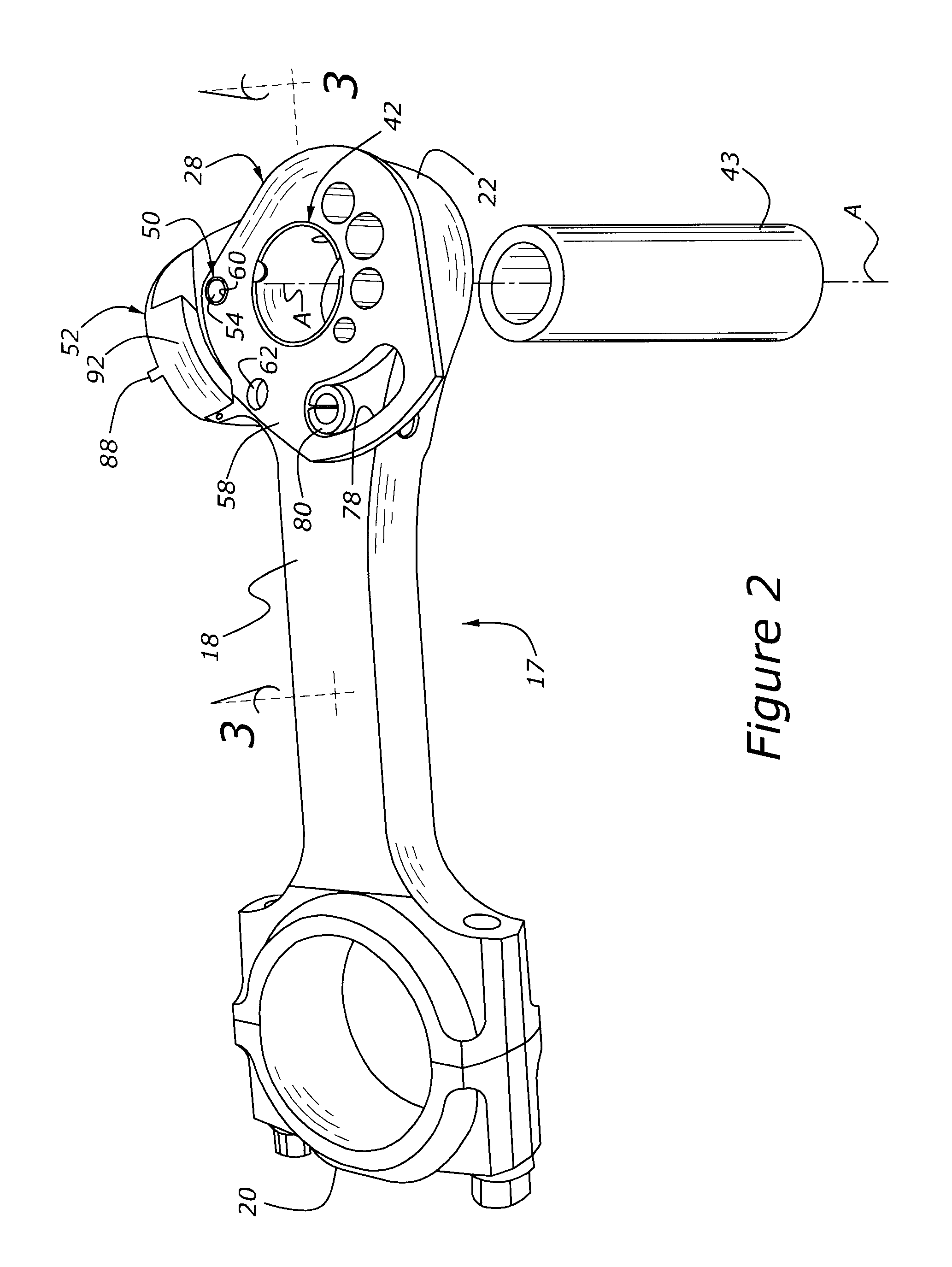Variable compression ratio engine with isolated actuator
a variable compression ratio and actuator technology, applied in the direction of engines, mechanical equipment, machines/engines, etc., can solve the problems of mechanical damage to the engine, increase the heat transfer of the engine, and loss of engine operating efficiency, so as to prevent unintended spatial displacement of the piston and effect of effective altering the compression ratio
- Summary
- Abstract
- Description
- Claims
- Application Information
AI Technical Summary
Benefits of technology
Problems solved by technology
Method used
Image
Examples
Embodiment Construction
[0038]Referring to the Figures, a schematic of a gasoline powered, internal combustion engine is generally shown at 14 in FIG. 1. The engine 14 includes a crank shaft 16 supported for rotation in the typical main bearings (not shown). A connecting rod, generally indicated at 18, has a lower crank end 20 that is rotationally connected to the crank shaft 16, about a crank pin bore axis C. Longitudinally spaced from the crank end 20, the connecting rod 18 includes a piston end 22 supporting a rod bore 24 that is centered along a parallel axis B. A piston, generally indicated at 26, is pivotally connected to the piston end 22 of the connecting rod assembly 17 by a piston pin, generally indicated at 43. The piston pin 43 provides articulating, jointed movement of the piston 26 relative to the connecting rod assembly 17. The piston 26 is guided in a reciprocal stoking direction within a cylinder 30 for movement between Bottom Dead Center (BDC) and Top Dead Center (TDC) limits, the distanc...
PUM
 Login to View More
Login to View More Abstract
Description
Claims
Application Information
 Login to View More
Login to View More - R&D
- Intellectual Property
- Life Sciences
- Materials
- Tech Scout
- Unparalleled Data Quality
- Higher Quality Content
- 60% Fewer Hallucinations
Browse by: Latest US Patents, China's latest patents, Technical Efficacy Thesaurus, Application Domain, Technology Topic, Popular Technical Reports.
© 2025 PatSnap. All rights reserved.Legal|Privacy policy|Modern Slavery Act Transparency Statement|Sitemap|About US| Contact US: help@patsnap.com



